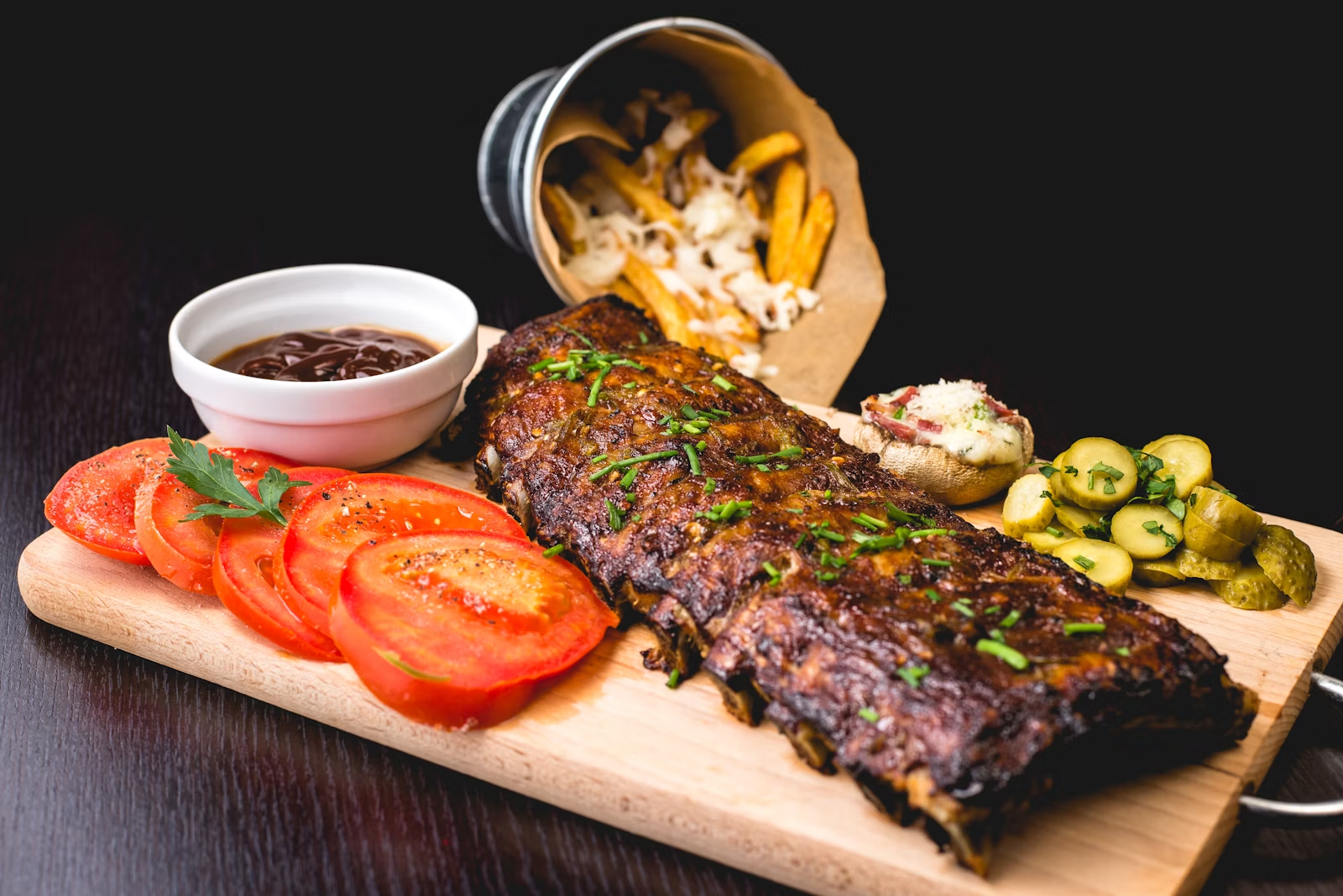
healthy fish recipes are a delicious way to add lean protein and beneficial omega-3 fats to your weekly rotation. With simple methods like baked salmon and grilled tilapia, plus a handful of fine herbs, you can cook fast, light meals that taste like more work than they are. This guide focuses on practical techniques, smart portions, and repeatable flavor formulas—no miracle promises—so your dinners stay satisfying and aligned with your goals.
Key concepts & benefits
Fish offers high-quality protein with fewer calories than many red meats, and fatty varieties like salmon deliver EPA/DHA omega-3 fats. A helpful plate template is ½ vegetables + ¼ lean protein + ¼ smart carbs, with 1–2 tsp healthy fats for flavor. Season boldly and cook just to doneness for juicy results; overcooked fish is dry and less tasty, which can derail consistency.
Evidence-based references: American Heart Association & USDA MyPlate—Protein Foods.
Step-by-step guide
Step 1 — Choose your fish (taste, texture, nutrition)
- Salmon: rich, moist, high in omega-3; great for baking or pan-searing.
- Tilapia: mild, lean, budget-friendly; ideal for grilling or quick sautés.
- White fish (cod, haddock): delicate flakes; good for baking with a crumb topping.
- Buy fresh or well-frozen fillets; look for firm flesh and a clean sea smell.
Step 2 — Season with fine herbs & pantry basics
- Fine herbs mix: parsley, chives, tarragon, and chervil (or simply parsley + chives).
- Essentials: lemon zest/juice, garlic, pepper, pinch of salt, olive oil spritz.
- Add delicate herbs after cooking to keep flavors bright and fresh.
Step 3 — Baked salmon & grilled tilapia timings
- Baked salmon: 400°F (205°C) for 10–14 min, depending on thickness; pull at 125–130°F (52–54°C) for moist flakes.
- Grilled tilapia: well-oiled grates, medium-high heat, 3–4 min per side; handle gently with a wide spatula.
- General rule: ~8–10 min total per inch of thickness; rest 2–3 min.
Step 4 — Portioning, storage & weekly planning
- Portion ~100–150 g cooked fish per meal (palm-size).
- Refrigerate within 2 hours; keep 2–3 days; freeze cooked portions 1–2 months.
- Reheat gently (low oven or covered skillet) to avoid drying out; add lemon/herbs to refresh.
Tips, common mistakes & fixes
- Mistake: overcooked fillets. Fix: use a thermometer and pull early; carryover heat finishes.
- Mistake: sticking to the grill. Fix: preheat, oil grates, and don’t flip too soon.
- Mistake: bland seasoning. Fix: salt lightly, use citrus and herbs; finish with zest.
- Mistake: mushy frozen fish. Fix: thaw overnight on a rack; pat dry before cooking.
Tools & recommended resources

- Instant-read thermometer: target 125–130°F (52–54°C) for salmon; 140–145°F (60–63°C) for white fish.
- Sheet pan + parchment: easy baked salmon with minimal cleanup.
- Grill basket or wide spatula: support delicate fillets on the grill.
- Trusted resources: USDA—Protein Foods; FDA—Advice About Eating Fish.
- From our site: MonetizeWorks Blog • Contact • Privacy Policy.
4 healthy fish recipes (no fuss)
1) Lemon-Herb Baked Salmon
- 2 salmon fillets (about 1-inch thick)
- 1 tsp olive oil, lemon zest + juice, parsley + chives
- Bake at 400°F (205°C) for 10–14 min; rest and serve with greens
Rich flavor with minimal effort. Add a spoon of yogurt-mustard sauce if you like tang.
2) Grilled Tilapia with Fine Herbs
- 2 tilapia fillets, pat dry
- Olive oil spritz, salt, pepper, garlic powder; finish with chives + parsley
- Grill 3–4 min per side on medium-high; lemon wedges to serve
Light and quick—great with roasted vegetables or a grain salad.
3) Sheet-Pan Citrus Cod
- 2 cod fillets, orange + lemon slices, paprika, pepper
- Bake at 400°F (205°C) for 10–12 min until flakes easily
- Scatter herbs (parsley) at the end
Family-friendly and mild; the citrus keeps the fish juicy without extra fat.
4) Herbed Salmon Salad (meal prep)
- Leftover baked salmon, chopped celery + cucumber
- Greek yogurt + lemon + dill for a light dressing
- Serve in lettuce cups or on whole-grain toast
High-protein lunch that uses leftovers well—fresh, crunchy, and fast.

FAQ
How often should I eat fish each week?
Many guidelines suggest two servings per week, especially fatty fish like salmon for omega-3s. If you’re new, start with one fish night, then add a second on a different day. Vary species for flavor and budget, and keep seasonings simple. If pregnancy or specific health conditions apply, follow the FDA’s fish advice list and talk to a qualified professional.
How do I know when fish is done?
Look for opaque flesh that flakes with gentle pressure. An instant-read thermometer helps: salmon is moist at 125–130°F (52–54°C), and most white fish are done around 140–145°F (60–63°C). Err on the side of slightly under, then rest 2–3 minutes—carryover heat finishes cooking without drying.
Is farmed salmon okay?
Both farmed and wild salmon can be part of a healthy diet. Choose reputable sources, look for firm flesh and a clean smell, and cook to safe temperatures. If sustainability matters to you, consult resources like seafood watch lists. As always, focus on overall patterns—balanced plates and reasonable portions—rather than single “perfect” foods.
Can I meal-prep fish without it getting dry?
Yes—choose sauces that add moisture (yogurt-dill, lemon-herb), cook just to doneness, and reheat gently. Many people prefer to cook once and eat cold the next day in salads or bowls. For hot meals, reheat covered with a splash of broth or lemon juice in a low oven or skillet, then finish with fresh herbs.
Conclusion & CTA
healthy fish recipes make weeknights faster and lighter: lean protein, quick cooking, and clean flavors from citrus and fine herbs. Keep a couple of species on rotation, master doneness cues, and season confidently. That repeatable system—not strict rules—drives steady progress over time.
Want printable planners and new recipes? Join our newsletter on the MonetizeWorks Blog and grab the free Fish Night Starter Checklist.
Helpful links: USDA MyPlate • FDA—Advice About Eating Fish • American Heart Association